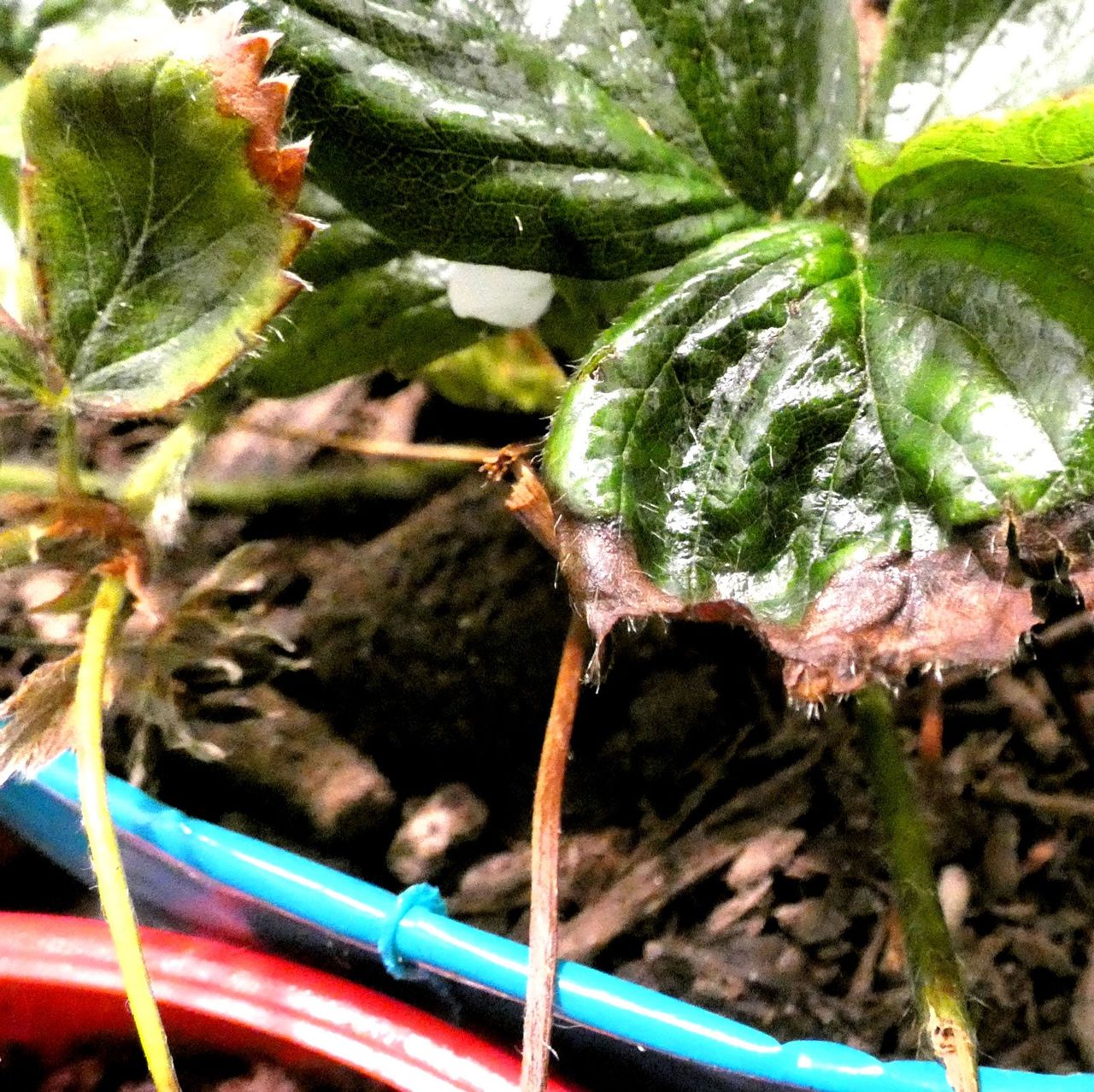Strawberry Rhizoctonia Rot: Controlling Rhizoctonia Rot Of Strawberries


Strawberry rhizoctonia rot is a root rot disease that causes serious damage, including major yield reduction. There is no way to treat the disease once it has set in, but there are several cultural practices you can use to reduce the risk that your strawberry patch will succumb.
What is Rhizoctonia Rot of Strawberries?
Also known as black root rot, this disease is actually a disease complex. This means there may be multiple pathogens causing the disease. Several fungal species have been implicated, including rhizoctonia, pythium, and fusarium, as well as some types of nematode. Rhizoctonia is a major culprit and often dominates the disease complex. The most visible aboveground signs of strawberries with rhizoctonia fungi and black root rot are general lack of vigor, limited growth of runners, and smaller berries. These symptoms are not uncommon for other root diseases, so to determine the cause, it is important to look below the soil. Underground, at the roots, rhizoctonia on strawberries shows as rotting, black areas. It may just be the tips of the roots, or there can be black lesions all over the roots. Early in the progression of the disease the core of the roots remains white, but as it gets worse, the black rot goes all the way through the roots.
Preventing Strawberry Rhizoctonia Fungus Infection
Black root rot is complex and there is no treatment that will save afflicted strawberries. It is important to use cultural practices to prevent it instead. Use only healthy plants when starting a strawberry patch. Check the roots to be sure they are all white and there are no signs of rot. Excess moisture also favors this disease, so be sure that your soil drains well—alternatively you can use raised beds—and that your strawberries do not get over watered. The disease is more prevalent in soil that is moist and that is also low in organic matter, so add in compost before planting strawberries. Strawberry plants that are stressed, don’t get enough nutrients, or have been damaged by pests, including nematodes, are more susceptible to black root rot. Maintain good health of plants by avoiding frost or drought stress, and by managing nematodes in the soil. Commercial strawberry growers may fumigate the soil prior to planting to avoid root rot, but this is not recommended for home growers. Good cultural practices should be adequate for a good harvest and minimal disease.
Gardening tips, videos, info and more delivered right to your inbox!
Sign up for the Gardening Know How newsletter today and receive a free copy of our e-book "How to Grow Delicious Tomatoes".

Mary Ellen Ellis has been gardening for over 20 years. With degrees in Chemistry and Biology, Mary Ellen's specialties are flowers, native plants, and herbs.
-
 How To Grow Strawberries From A Strawberry: All You Need To Cultivate Yummy Fruits
How To Grow Strawberries From A Strawberry: All You Need To Cultivate Yummy FruitsYou may know how to grow strawberries from small plants or runners – but what about growing from the fruit? Here we show you how to grow strawberries from a strawberry
By Mary Ellen Ellis
-
 Best Tomatoes For Containers: 10 Tastiest Varieties For Plentiful Produce In Compact Areas
Best Tomatoes For Containers: 10 Tastiest Varieties For Plentiful Produce In Compact AreasThese are the best tomatoes for containers that prove you don't need to have a large space or elaborate garden to grow delicious produce.
By Bonnie L. Grant